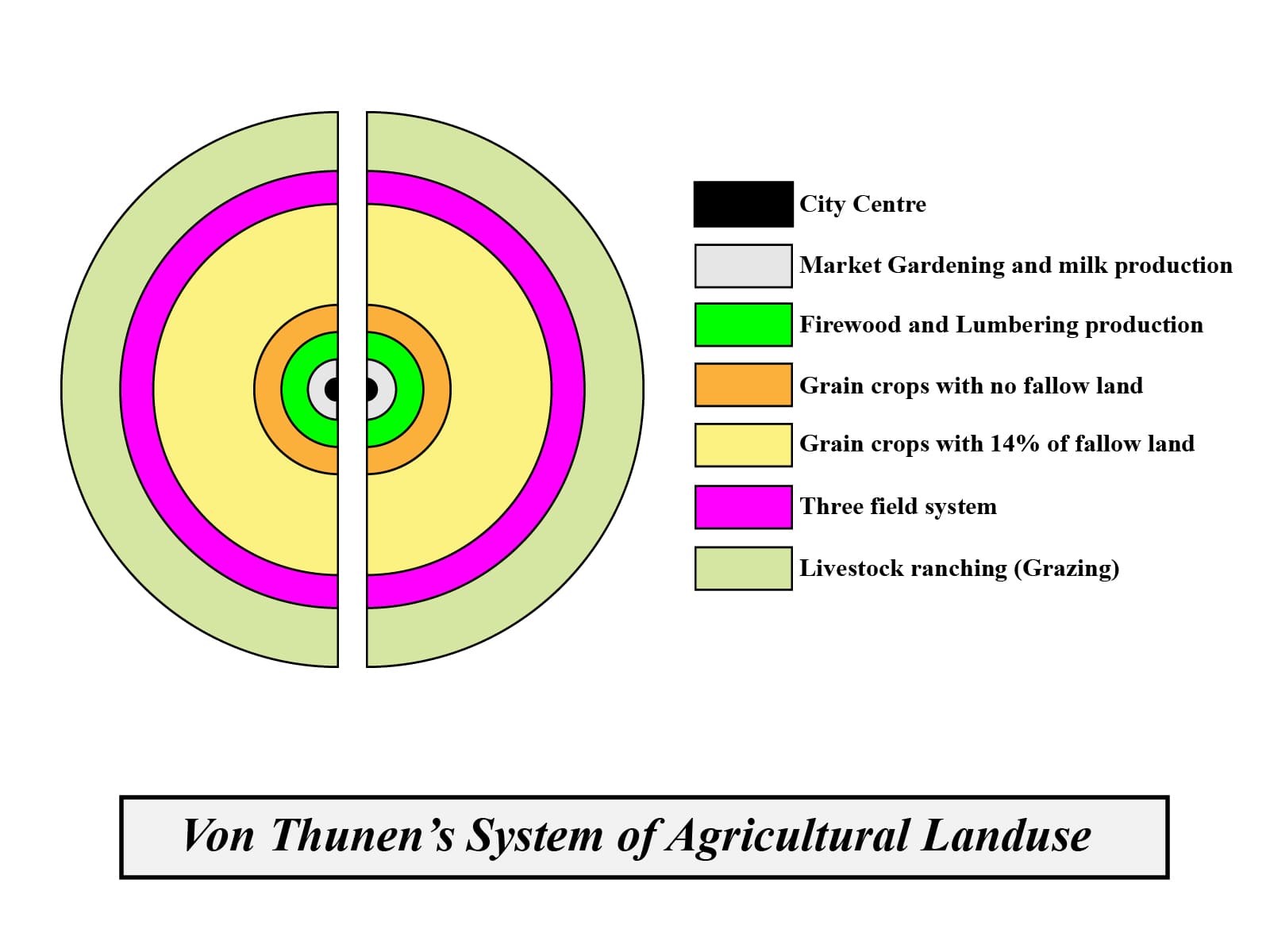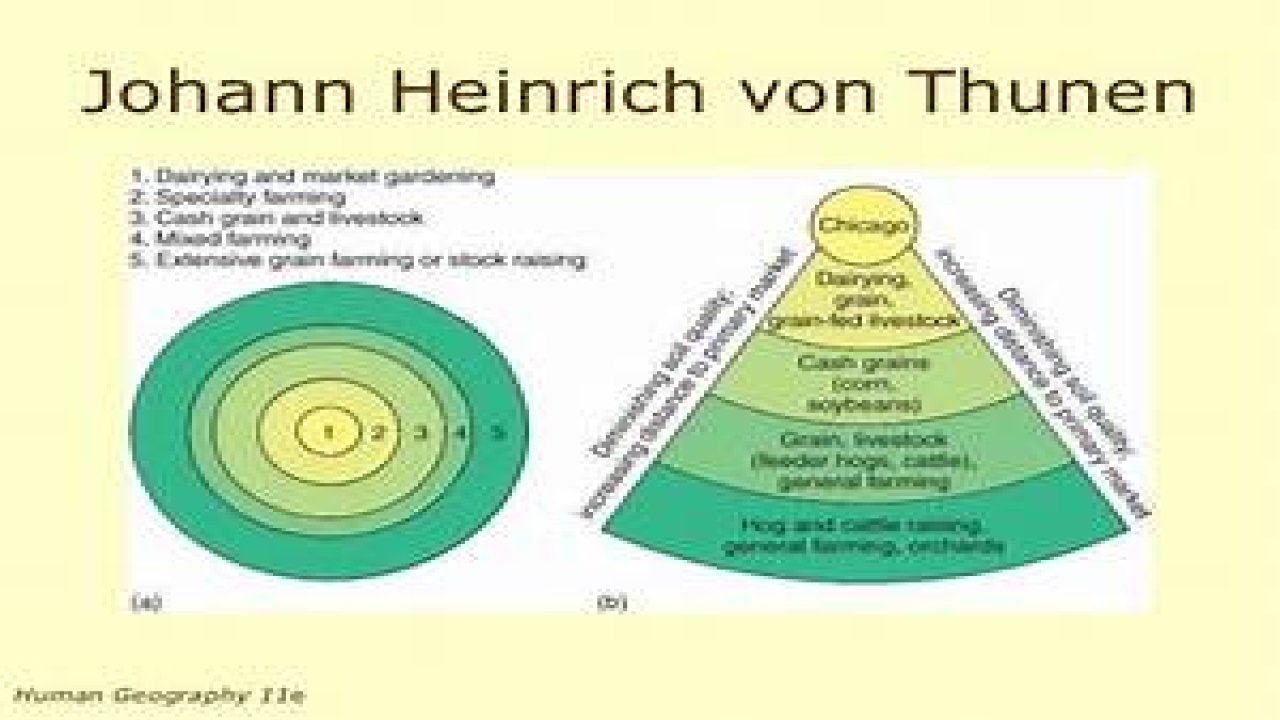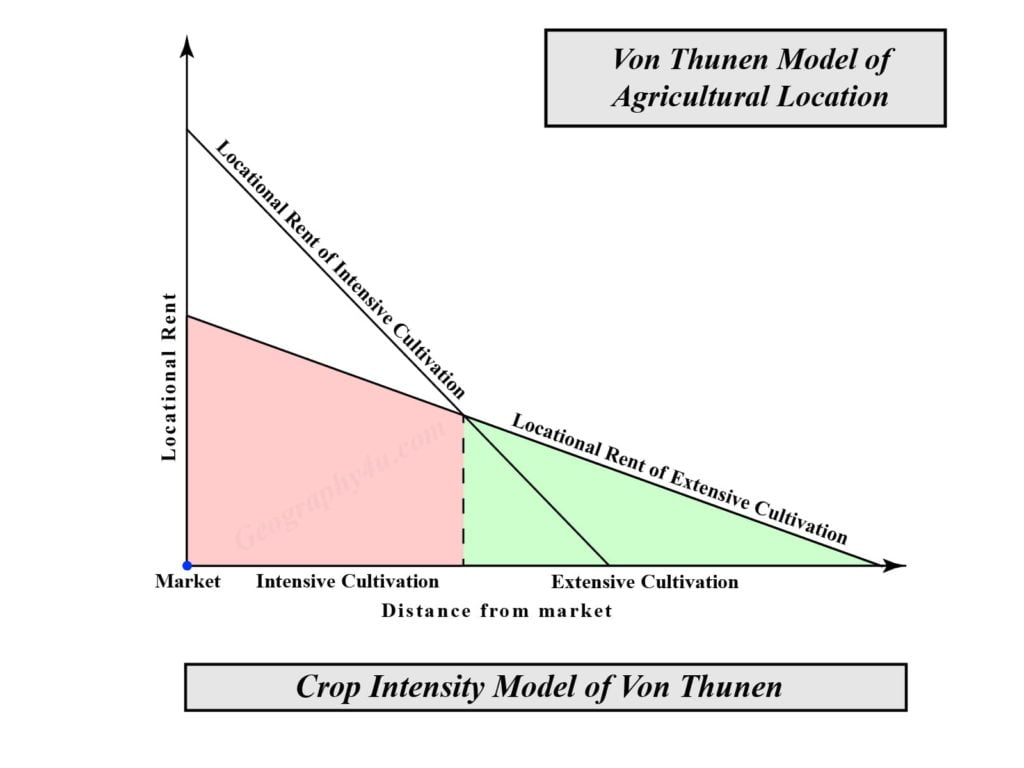
Have you ever stopped to think about how the geographical location of farms influences the types of food we consume? This intriguing question brings us to the work of **Johann Heinrich von Thünen**, a pioneering economist and agricultural theorist whose insights have significantly shaped our understanding of agricultural practices. Von Thünen developed a model that illustrates how the distance from a central market affects the types of crops that are cultivated in surrounding areas. His theories, which emerged in the early 19th century, are far from being mere historical curiosities; they continue to play a vital role in contemporary agricultural economics and land use planning. By examining the interplay between location, transportation costs, and agricultural production, von Thünen’s work helps us comprehend the complex dynamics of food distribution and consumption patterns that persist in today’s global economy. His legacy remains relevant as we navigate the challenges of sustainable farming and food security in an ever-changing world.
Who Was Johann Heinrich von Thünen?

Born on **June 24, 1783**, in the quaint town of Jever, located in Oldenburg, Germany, Johann Heinrich von Thünen emerged as a figure of remarkable significance in the realm of agricultural economics. His life journey came to an end on **September 22, 1850**, in Tellow, Mecklenburg, yet the profound impact of his ideas continues to resonate in contemporary discussions about land use and agricultural practices. So, what were the driving forces behind his innovative thinking?
### The Early Years
Thünen’s formative years unfolded during a period when agriculture served as the cornerstone of societal structure and economic stability. Growing up on a family farm, he gained firsthand experience that profoundly influenced his understanding of land utilization and agricultural productivity. However, it was not until he embarked on an extensive data-gathering endeavor for his seminal work, **Der isolierte Staat** (The Isolated State), that he truly began to carve out his legacy in the field of agricultural theory.
#### The Birth of a Theory
In **1810**, Thünen initiated the meticulous collection of data that would eventually lead to the publication of his groundbreaking book in **1826**. He conceptualized a model of an **isolated city** encircled by a vast expanse of fertile land, which served as a framework for analyzing agricultural production in relation to transportation costs. This innovative model was not merely a theoretical exercise; it provided a systematic approach to understanding how distance from a central market influences the types of crops grown and the economic viability of farming practices. Through his work, Thünen laid the groundwork for modern economic geography and agricultural economics, establishing principles that would guide future research and policy-making in these fields.
The Core Concepts of Thünen’s Model

So, what exactly were the groundbreaking ideas proposed by Johann Heinrich von Thünen? Let’s delve into his concepts in a more detailed manner!
### 1. The Isolated State Model
Picture a bustling city situated at the heart of a vast, flat, and fertile landscape. Thünen developed a theory suggesting that various types of agricultural products, including crops and livestock, would be cultivated in **concentric zones** radiating outward from this central urban area. The fundamental principle behind this model is that the proximity to the city significantly influences agricultural practices. As one moves further away from the city, transportation costs rise, making it less feasible to produce perishable goods. Therefore, the closer a farm is to the city, the more intensive and diverse the farming practices become.
### 2. Zone of Intensive Agriculture
In the **innermost zone**, which is closest to the city, you would typically find the cultivation of highly perishable goods such as fresh vegetables and dairy products. These items require immediate access to the market to prevent spoilage and reduce transportation expenses. This zone can be likened to a vibrant farmer’s market, where the freshest produce is readily available, catering to the urban population’s demand for quality and freshness.
### 3. The Outer Zones
As you venture further from the city, the types of agricultural products shift significantly. The **second zone** is likely to be dedicated to the cultivation of grains, which are less perishable and can be stored for longer periods. Moving outward to the **third zone**, you would find areas primarily used for livestock farming. In these outer zones, agricultural practices become less intensive, and the goods produced are typically more durable and easier to transport over longer distances. This layered approach to agricultural production creates a structured and efficient system that maximizes land use and minimizes costs.
### Table: Thünen’s Concentric Zones
| Zone | Type of Agriculture | Distance from City |
|——|————————————|———————|
| 1 | Perishables (Vegetables, Dairy) | Closest |
| 2 | Grains | Moderate |
| 3 | Livestock | Farthest |
In summary, Thünen’s model provides a fascinating framework for understanding the relationship between agricultural production and urban markets, illustrating how geography and economics intertwine in the realm of farming.
Why Is Thünen’s Model Important?

You may be wondering, “Why should I pay attention to the theories of an old scholar?” That’s a valid question, and it leads us to explore the enduring significance of Johann Heinrich von Thünen’s work in our contemporary society.
First and foremost, Thünen’s model continues to play a crucial role in **urban planning** and **agricultural policy**. By analyzing how transportation costs influence agricultural practices, modern planners can make informed decisions regarding land use and the allocation of resources. This understanding is essential for creating efficient and sustainable urban environments that can support growing populations.
Moreover, in a time when sustainability is more important than ever, Thünen’s insights encourage us to rethink our food production methods. By emphasizing local production, we can significantly lower our carbon footprint and promote environmentally friendly practices. It’s akin to enjoying the best of both worlds—satisfying our needs while being kind to the planet.
Lastly, Thünen was remarkably forward-thinking in recognizing the **economic implications** of agricultural practices. His theories laid the groundwork for what we now know as modern economic geography and agricultural economics. It’s truly remarkable to see how the ideas of one individual can create a ripple effect that influences various fields and continues to resonate through time. Thünen’s work is not just a relic of the past; it remains relevant and impactful in shaping our future.
Thünen and Military Economics

But wait, there’s more! Thünen didn’t just stop at agriculture. He also made significant contributions to military economics. He pointed out that the **draft** makes the cost of military manpower artificially low, which can lead governments to make reckless decisions regarding their citizens’ lives. Talk about a heavy topic!
1. The Cost of War
Thünen’s insights remind us that the **cost of war** isn’t just financial; it’s human. When governments don’t bear the full cost of their military actions, they may be more willing to engage in conflict. It’s a sobering thought, isn’t it?
2. Ethical Considerations
His work raises ethical questions about the value of human life in the context of war. Should we prioritize lives over strategic gains? Thünen’s theories encourage us to think critically about these issues.

In wrapping up, Johann Heinrich von Thünen was more than just an agriculturalist; he was a pioneer whose ideas continue to resonate today. His model of agricultural production not only helps us understand the relationship between location and farming but also prompts us to consider the broader implications of our choices—both in agriculture and beyond.
So next time you bite into a fresh vegetable or ponder the complexities of military economics, remember the man who started it all. Thünen’s legacy is a reminder that the past can inform our future in profound ways!

